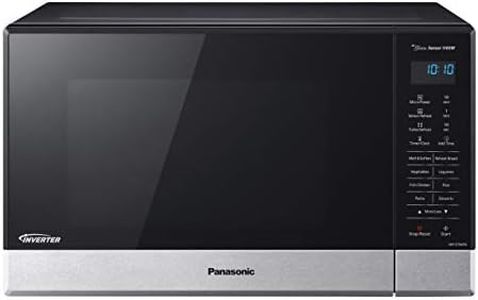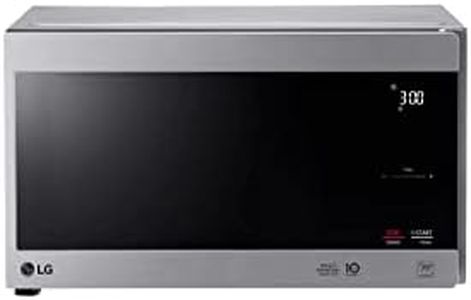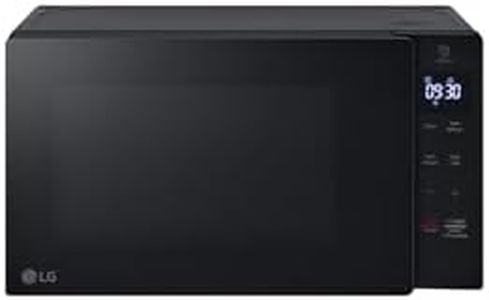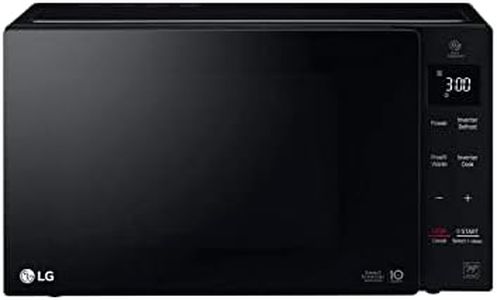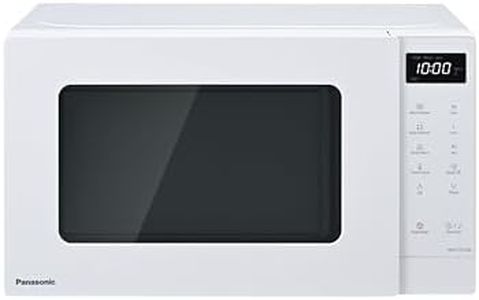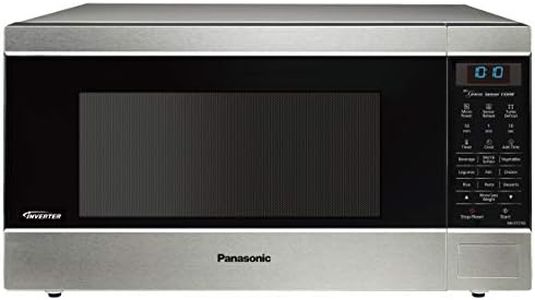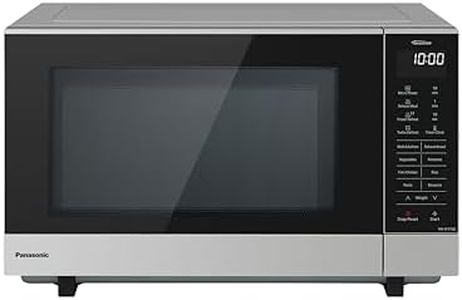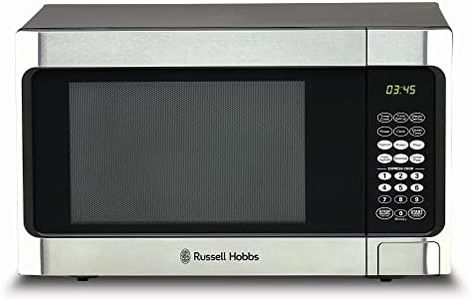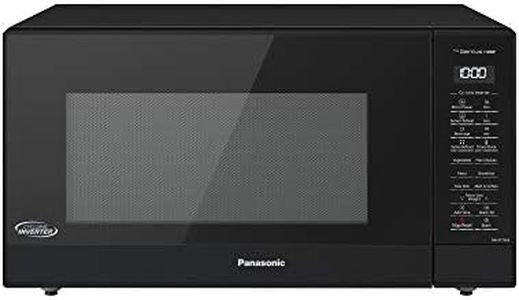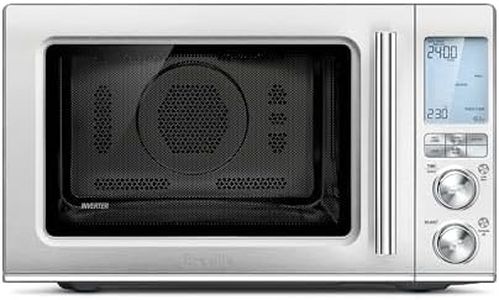We Use CookiesWe use cookies to enhance the security, performance,
functionality and for analytical and promotional activities. By continuing to browse this site you
are agreeing to our privacy policy
10 Best Microwave Ovens
From leading brands and best sellers available on the web.By clicking on a link to a third party's website, log data is shared with that third party.
Buying Guide for the Best Microwave Ovens
When choosing a microwave oven, it's important to balance your cooking needs with the space you have available in your kitchen. A good microwave should make meal preparation easier, whether you're heating leftovers, defrosting food, or cooking meals from scratch. To make the best choice, think carefully about how often you'll use it, what you'll use it for, and who will be using it (yourself, children, or elderly family members). Focus on features that make your daily routine smoother, and try to find a model that offers the right mix of size, power, and user-friendly controls.CapacityCapacity refers to the internal size of the microwave, usually measured in liters or cubic feet. It determines how much food you can heat or cook at once and what sizes of dishes you can use. Smaller microwaves (around 17-20 liters or 0.6-0.7 cubic feet) are great for singles, couples, or small kitchens, as they fit easily on countertops and handle basic tasks like reheating or defrosting. Medium sizes (20-30 liters or 0.7-1.0 cubic feet) can accommodate most dinner plates and are suitable for small families or those who use their microwaves for cooking simple meals. Larger capacities (over 30 liters or 1.0 cubic foot) can handle big dishes, multiple servings, or even larger casseroles, making them suitable for bigger families or those who cook often in the microwave. Choose a capacity that matches your household size and typical food portions.
Power OutputPower output, measured in watts, indicates how quickly and evenly the microwave will cook or heat food. Lower wattage (600-800W) microwaves are slower and best for basic tasks like reheating drinks or ready meals. Medium wattage (800-1000W) is the most common and offers a good balance, letting you cook, reheat, and defrost foods efficiently. Higher wattage (1000W and above) provides faster results and more even cooking, ideal for those who use the microwave for a variety of tasks including cooking raw ingredients. If you mostly reheat or defrost, lower to medium wattage is usually sufficient; frequent cooks will benefit from higher power.
Type (Solo, Grill, Convection)Microwaves come in three main types. Solo microwaves are basic models, good for simple tasks like reheating, defrosting, and basic cooking. Grill microwaves have an additional heating element for grilling foods from the top, perfect for browning pizzas, toasting sandwiches, or grilling meat. Convection microwaves combine microwave energy with a fan and heating element to allow baking and roasting, making them versatile enough to handle cakes, cookies, and roasted dishes. Solo models suit those with simple needs, grill microwaves are great for those who enjoy crispy topping, and convection models are best for adventurous cooks who want the flexibility to bake and roast.
Control Panel and Preset FunctionsThe control panel is the interface you use to set time, power, and cooking modes. Simpler microwaves use mechanical dials, while others have touch buttons, digital displays, and even sensor-based controls. Many models offer preset functions for tasks like popcorn, potatoes, or beverages, making cooking easier and eliminating guesswork. If you appreciate simplicity, opt for models with easy-to-use dials or minimal buttons; if you want more automation and accuracy, look for digital controls and useful preset functions tailored to your cooking habits.
Turntable Size and TypeThe turntable is the rotating plate inside the microwave, which helps heat food evenly. Larger turntables allow you to use bigger plates and containers, but take up more space. Some advanced models use flatbed technology instead of a turntable, creating more room and making cleaning easier. For most households, a standard turntable size is sufficient, but if you often use large dishes or want easier cleaning, consider a larger turntable or a flatbed design.
Child Lock and Safety FeaturesSafety features, such as a child lock, help prevent accidental use by children or unwanted changes during operation. Child lock typically involves locking the control panel so kids can't start the microwave or alter settings. This is especially important for families with young children. Other safety features may include automatic shut-off, cool-touch exteriors, and steam vents. Choose a model with safety features that match your household's needs, prioritizing child lock if you have kids.
Ease of CleaningA microwave that's easy to clean will have a smooth interior surface, removable turntable, and features like steam cleaning. Some have special coatings that prevent food from sticking, making cleanup faster and more hygienic. If convenience matters to you, opt for a model with an easy-to-clean design; this is especially handy if you use your microwave frequently and want to save time on maintenance.
